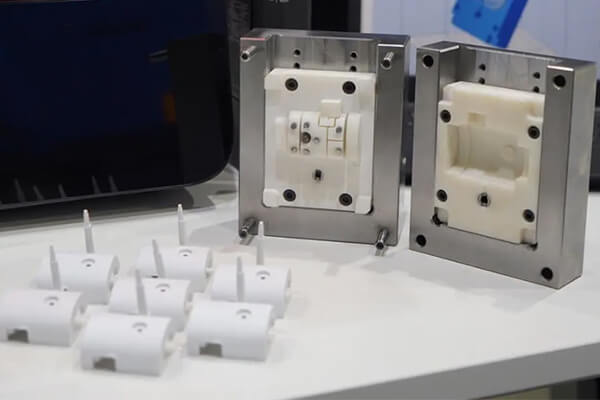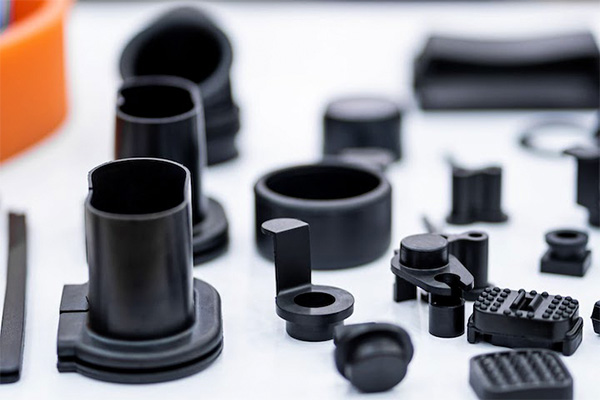Low Volume Injection Moulding for Flexible Parts Manufacturing
The rapid manufacturing sector is undergoing a dramatic shift. It is imperative to get products onto the market as soon as possible in this fast-paced industry. Designers, engineers, and manufacturers must simultaneously make sure that their products are of a high caliber. Low volume injection moulding is one area of manufacturing that meets customer demands.
Manufacturers are able to produce identical low-volume plastic parts with consistent features and qualities thanks to this production method. Modern manufacturers use innovative operating methods to their advantage in the changing marketplaces. You will learn all there is to know about low volume injection moulding from this comprehensive guide.

On-Demand Manufacturing as the Next Frontier in Industry
The concept of on-demand, low-volume manufacturing is relatively novel in the industrial landscape, ushering in significant transformations in how engineers engage with suppliers and manufacturers. This paradigm shift is particularly pronounced in the realm of custom plastic fabrication, where the continuous evolution of advanced technologies is reshaping the manufacturing landscape.
This evolution holds the promise of minimizing quoting delays and enhancing prototype manufacturing techniques. The supply chain benefits from improved visibility into orders, simplifying the overall process. Customers, in turn, gain the ability to seamlessly manage their orders through a user-friendly platform.
Sungplastic has embraced a fusion of cutting-edge Big Data analytics, software, and hardware to facilitate the integration of Industry 4.0. This strategic amalgamation ensures the adoption of innovative approaches and industry best practices, leading to more intelligent production processes and cost-efficient production of low-volume plastic parts.
In contrast to traditional manufacturing, characterized by mass production of large-scale homogeneous products, on-demand manufacturing allows for the production of low-volume, customized items, such as small-scale plastic injection molding. Leveraging cloud-based technologies and self-service models, customers can obtain real-time quotes and monitor their orders throughout the manufacturing process.
The advent of on-demand manufacturing is a response to the demand for precise, small-series injection molding parts. This approach caters to immediate production needs, addressing challenges related to lead time, communication, design for manufacturability (DFM), and cost. As the industry increasingly embraces digital technology, on-demand manufacturing emerges as a transformative force, revolutionizing traditional production methods.

Key Advantages of Low Volume Injection Moulding
Plastic injection molding stands out as a crucial process in rapid manufacturing, evolving swiftly to expedite time-to-market. However, the conventional approach doesn’t always match the urgency demanded by the plastic market. The intricacies of mold design can elongate production timelines. Low volume injection moulding emerges as an effective solution to these challenges, offering several benefits. Here are some of them:
Utilization of Softer Aluminum Tooling
In contrast to traditional molding, low volume injection moulding employs softer aluminum for mold creation instead of hardened steel. Aluminum, being significantly softer than steel, facilitates faster and more straightforward work. Additionally, aluminum tooling eliminates the need for extra annealing steps required for steel, and it supports various surface treatments. This approach not only expedites the manufacturing process but also ensures compatibility with standard steel mold treatments.
Quality Parts Production
Despite using a softer tooling material, low volume injection moulding yields highly durable and functional parts. It proves to be a practical manufacturing technique for a variety of products. Moreover, aluminum’s superior heat transfer rate compared to steel enhances design flexibility, as the positioning of cooling lines becomes less critical. This feature bridges the gap between prototyping and high-volume production, ensuring better design adaptability.
Cost Savings
Contrary to the belief that bulk purchases save money, this isn’t always applicable in manufacturing, especially for construction items. High-volume injection molding companies may impose minimum order requirements to offset substantial production investments. In contrast, low volume injection moulding incurs lower overheads, allowing manufacturers to produce without demanding minimum orders. This flexibility is advantageous for small-batch plastic manufacturing, promoting cost-effective production without relying on outdated inventory.
Reduced Lead Times
Beyond cost considerations, low volume injection moulding enhances the efficiency of plastic part production. The system facilitates swift order quotations and reviews part designs accurately and quickly. The soft nature of aluminum streamlines mold creation, eliminating the need for hardening, resulting in faster mold delivery to the manufacturing facility. This acceleration significantly reduces time to market, benefiting both small and large product teams.
Design Flexibility
Small-scale injection molding, characteristic of low-volume production, accommodates modifications or alterations to designs without significant impact. This flexibility ensures that products can be perfected before reaching consumers. The low volume injection moulding process provides immediate feedback, aiding in the enhancement of manufacturability and the testing of new concepts before mass production.
Bridging the Scale Divide
For companies planning mass-produced products, small-scale plastic manufacturing through low volume injection moulding serves as a strategic starting point. It acts as a bridge between prototyping and full-scale production, allowing for the creation of a feasible prototype without excessive commitments. This approach facilitates the refinement of both the product and the manufacturing process before scaling up production.
Considerations in Designing Low Volume Injection Moulding Parts
When aiming for effective manufacturing in low volume injection moulding, several key design considerations should be taken into account:
Select the Material for Injection Molded Part
The first step in low volume injection moulding design is choosing the right material from the array of commercial-grade plastic options. Thermoplastic resins offer various additive fillers and color choices. Material selection impacts features such as strength, thermal and chemical resistance, durability, and more. Flexibility varies among materials, influencing the need for drafts. Assess the intended application and exposure levels of your products before making a material choice.
Refine the Finish of a Part
An often-overlooked aspect in plastic injection molding is choosing an appropriate surface finish. Opting for a smoother finish than necessary can adversely affect a product’s functionality. For instance, highly smooth surfaces may require hand-polishing of mold cavity surfaces, significantly increasing manufacturing costs and lead time. A more cost-effective approach is an as-milled surface that may exhibit tool marks. Choose a finish that aligns with the part’s function and cost considerations.
Balance Wall Thickness in Both Dimensions
Maintaining an optimal wall thickness is critical for plastic parts production. Walls exceeding the recommended range for specific plastic families may lead to defects like sink marks and warping. The general guideline is to use a wall thickness consistently between 0.04 to 0.14 inches throughout the entire part.
Address Weak Corners with Radii
Given that machining of aluminum molds employs end mills, sharp internal corners can pose challenges. Stress and compromised integrity often result from sharp corners on injection molded parts. Utilizing rounded edges or vertices (radii) in plastic part design enhances product strength and moldability.
Incorporate Draft for Seamless Part Ejection
Ensuring easy release from the mold is facilitated by generously angling injection molded parts. Creating components with tapered edges enhances the ejection process and contributes to a smoother production cycle.
Explore the Benefits of a Multi-Cavity Mold
For those seeking to produce multiple identical parts simultaneously, a multi-cavity mold proves advantageous. It allows for the formation of two or more designs with slight variations in a single shot, facilitating rapid testing of different product designs. Multi-cavity molds are also suitable for larger quantities beyond initial samples, potentially reducing costs per unit while maintaining efficiency.
Selecting the Right Low-Volume Plastic Injection Molding Services
Low volume injection moulding stands as an effective method for high-quality manufacturing, but finding the ideal partner for top-tier plastic injection molding services can be a challenge. Here are several factors to consider before deciding on a plastic injection company:
Volume Capacity and Specialization
The initial step in refining your choice is assessing the company’s volume capacity and specialization. It is advisable to opt for companies capable of handling low to moderate production volumes (parts under 10,000). Such companies can provide prototypes swiftly for testing purposes.
Specification Compliance
Choose a company that can deliver low-volume, high-quality injection-molded products without compromising on specifications. The selected low volume injection moulding company should fully adhere to the design specifications. Recommendations based on experience, knowledge, and expertise are valuable, and any adjustments to the design should be subject to your approval.
Flexible Services
Opt for a low volume injection moulding partner offering a diverse range of prototyping services, including mold flow analysis, responsive manufacturing, and part design. Companies that also provide additional manufacturing services, such as CNC machining and injection molding, bring added value. These versatile companies better understand your requirements and can address production challenges proactively.
Efficiency and Quality
A reputable injection molding company for small-scale plastic parts production must uphold high standards of efficiency and quality. Ensure that their machines incorporate the latest technologies, supported by high-quality project management software to enhance communication throughout the production process. This commitment to efficiency and quality is essential for a successful partnership.
Alternatives to Low-Volume Plastic Injection Molding
In addition to low volume injection moulding, several other low-volume manufacturing methods offer cost-effectiveness and expedited time to market. Here are some alternatives:
3D Printing
A cutting-edge manufacturing process for low-volume production, 3D printing eliminates the need for upfront mold investment and is renowned for faster lead times. Preferred by engineers and designers for quick iterations in plastic product production, 3D printed parts may feature layered surfaces. However, these surfaces can be easily refined through sanding and painting to achieve the desired finish.
CNC Machining
Despite being one of the oldest methods, CNC machining remains a reliable choice for low-volume manufacturing. Its versatility allows it to work with various materials, creating accurate molds, patterns, or dies for processes like molding and casting. While setup costs may be higher than some alternatives, CNC machining is well-suited for low-volume production runs with rapid turnarounds. Combining CNC milling with other processes, such as 3D printing, can achieve tighter tolerances.
Thermoforming
This robust process involves creating molds over which a thin plastic sheet is heated. The heated plastic is then shaped using mechanical force, pressure, or vacuum. Since this process involves low temperatures and pressures, the mold can be made from relatively inexpensive materials. Thermoforming is often used for producing relatively simple components like packaging trays and vehicle door panels. Surface finish is crucial, as the product may mirror details of the mold.
Urethane Casting
Urethane casting serves as an excellent alternative to prototype injection molding, with the key distinction being the absence of upfront costs and increased lead times. The process begins with the creation of a master pattern through high-resolution 3D printing or CNC machining. This pattern is used to produce a urethane mold into which resin is poured to create multiple copies of the product. With molds capable of lasting up to 20 runs, urethane casting is cost-effective and facilitates early testing of design requirements, allowing for timely feedback.
Services for Low Volume Injection Moulding
We are the best small-scale plastic injection molding partner you could have. We efficiently integrate our knowledge, skills, and strong facilities to quickly get your plastic parts from production to the market. With the latest technologies, our rapid quotation system can provide you with quotes in a matter of seconds.
With our low volume injection moulding services, we take pride in offering quick turnaround times without sacrificing quality. Selecting us would entail receiving high-quality prototypes at reasonable costs and with short lead times. Kindly reach out to us so we can provide our utmost services.
Get a free quote and design analysis today.
We’ll reply to you within 6 working hours.
We respect your privacy.
+86 139 2927 4777 (WhatsApp, Wechat)
